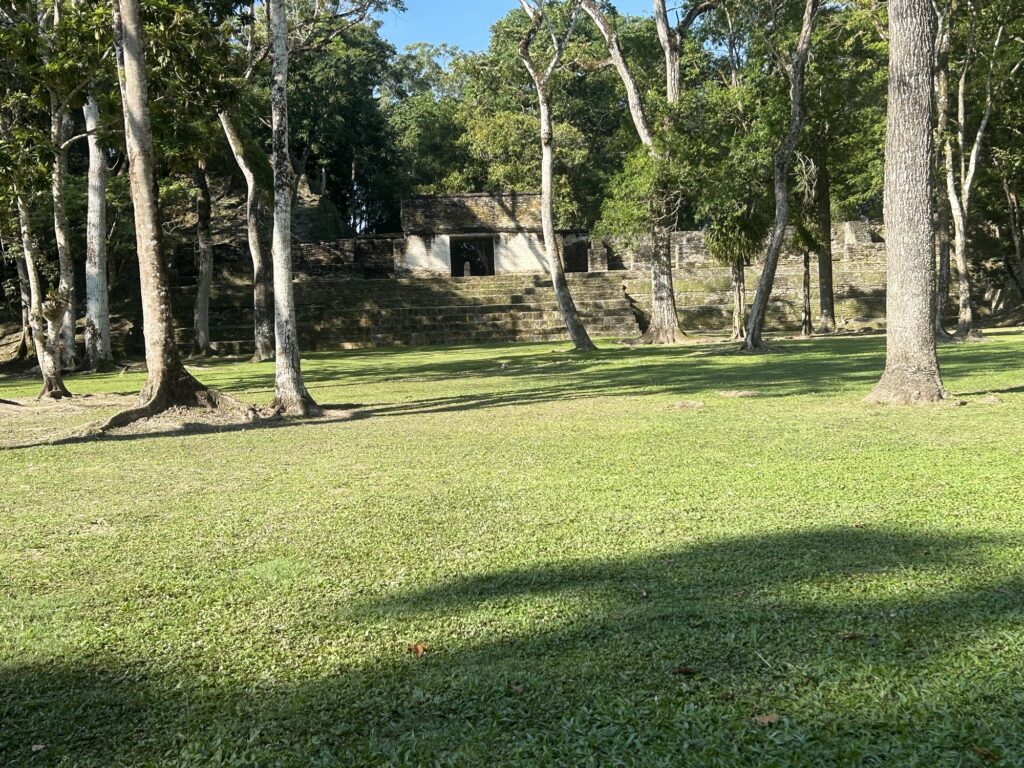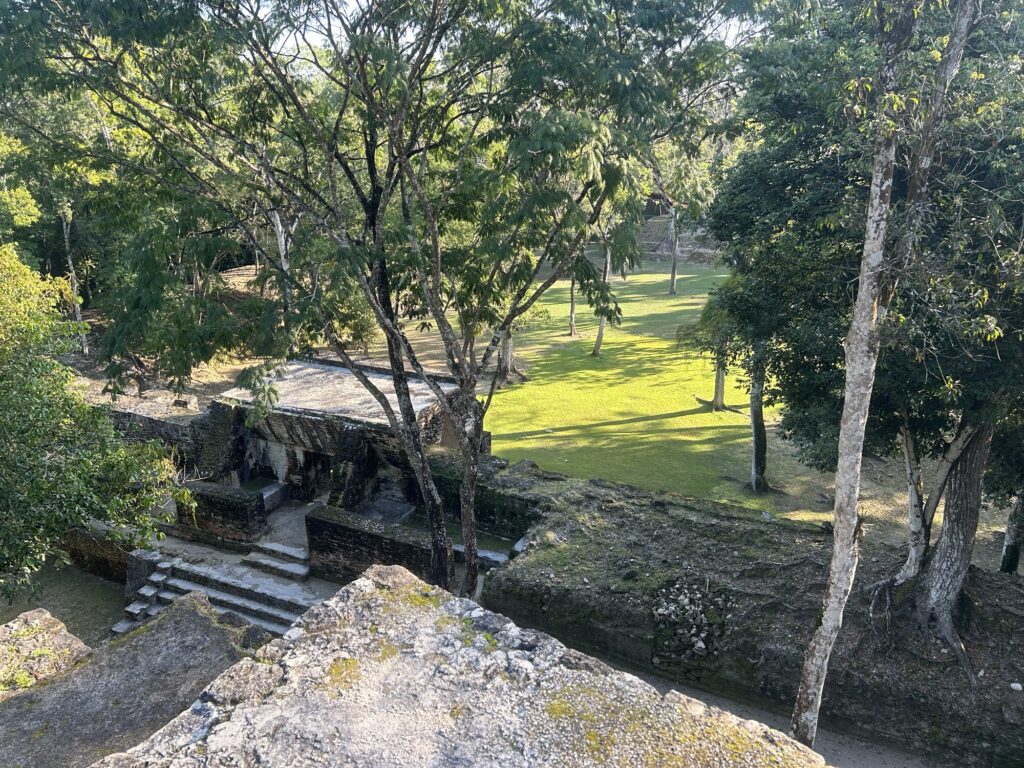of Cahal Pech in San Ignacio, Belize.
There is a lot of speculation as to why this city was abandoned after thriving for 1000 years.
I’m looking at the quality of the construction–the dressing of the stones, how carefully and masterfully they are laid up–and I’m wondering about the way these beautiful spaces were used. I’m thinking about what energy, what organization, it must have taken to build the city, to continually add on to it, to maintain it.
It must have taken an enormous division of labor–meaning an enormous exploitation of, and ranking among, the people who lived here.
One possible explanation of what happened is that the people who were doing the labor, who embodied the craft, decided they no longer needed to be exploited in that way. Maybe they just decided to stop building, maintaining, and serving. And once they decided to stop being exploited, there was no way the city could continue.

I continue my walk around the plaza. I look at the monuments.
Why is that possible explanation–that a refusal by laborers and craftspeople, a social evolution toward equality, brought down this city–why is this explanation not offered up? Why is it left unsaid?
Why not suggest, to today’s visitors, the idea that when the whole edifice of a civilization depends on social division and exploitation, the civilization itself is vulnerable to the eventuality that people will decide they don’t need to put up with that social division and exploitation anymore, and absent a solution for it, will let the city and the civilization decay into ruins.

I walk under the arches, stand on a wall and look down at an open plaza.
Maybe there’s another explanation. Maybe the laborers and craftspeople and elites lived in this city, worshipped here, maintained it, and after 1000 years everybody got so good at building and maintaining it that they just didn’t need the ranking and the exploitation as much. Maybe the conscious experience of being one of the laborers and craftspeople who built, maintained, and served–maybe the character of that conscious experience changed.
And maybe the ruling elite, sensing the change in that experience, tried to ensure the social ranking nonetheless stayed more or less the same by giving the workers technical training, promised them the imminent return of manufacturing jobs, promised to maintain for them the secure feeling of a familiar social order in the face of advancing skills, knowledge, technology.
And maybe that didn’t work, couldn’t work. because the real glory of the civilization they had built wasn’t in the technology, wasn’t in the achievement of building the city, the glory was in human imagination and human ability to dream and to manifest dreams.
And the dreams of the people who had been workers were larger than the city itself, those dreams rose above figuring out better and faster ways to replicate and expand the existing order.
